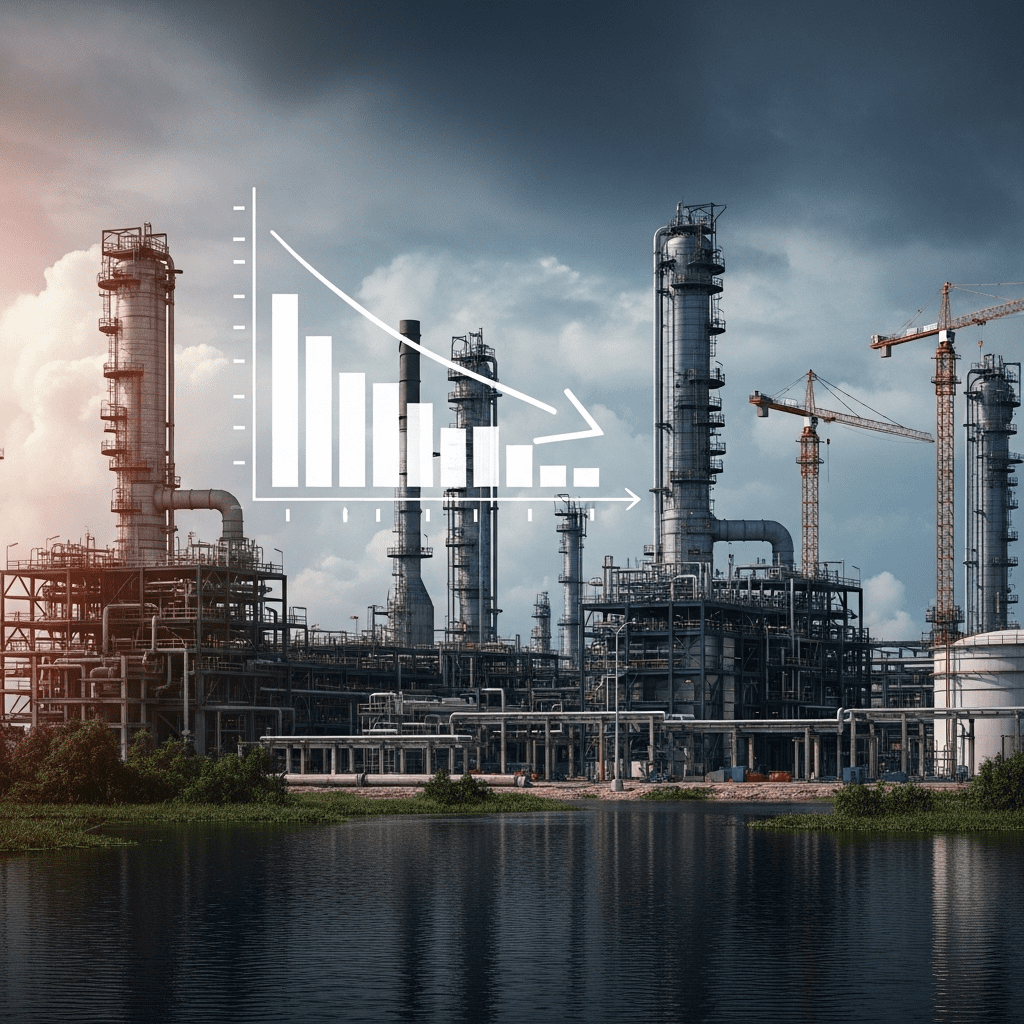Once hailed as a transformative project for Mexico’s energy sector, Pemex’s Dos Bocas Turns Into Mexico’s Refinery Nightmare is now a phrase capturing widespread concern among industry experts and policymakers in 2025. Launched with ambitious promises of self-sufficiency and energy independence, the Dos Bocas refinery in Tabasco has instead become a cautionary tale of cost overruns, delays, and environmental setbacks that threaten to undermine Mexico’s entire fuel strategy.
How Pemex’s Dos Bocas Turns Into Mexico’s Refinery Nightmare
The original vision for Dos Bocas was bold: a state-of-the-art complex capable of processing 340,000 barrels per day to end Mexico’s heavy dependence on imported gasoline. Fast forward to 2025, and the refinery’s challenges have escalated. Ballooning costs—now estimated at over $16 billion, far exceeding initial projections—have strained Pemex’s finances and the national budget. Operational delays have meant the refinery is still not fully functional, and technical issues continue to plague test runs, leading officials to drastically revise their production timelines.
Escalating Costs and Missed Deadlines
The Dos Bocas refinery was originally budgeted at $8 billion, but overruns have doubled the price tag. Auditors cite frequent design changes, supply chain disruptions, and inexperience with mega-projects as key factors. These mounting expenses have put pressure on Pemex, which is already laden with debt, further clouding the company’s future. [link to the home page of the site, “https://thinkinvest.org/”]
Operational Failures and Output Shortfalls
Technical failures have meant that major production goals set for 2023 and 2024 were missed. In 2025, Dos Bocas operates well below capacity, producing much less fuel than initially promised. These output shortfalls have forced Mexico to continue importing costly refined fuels, directly undermining the project’s core objective.
Environmental Impact and Local Opposition
Another aspect of how Pemex’s Dos Bocas turns into Mexico’s refinery nightmare involves mounting environmental criticism. Construction disrupted sensitive ecosystems in Tabasco, leading to the loss of mangroves and wetlands. Local communities have voiced strong opposition, citing pollution and inadequate compensation for land use. Environmental remediation costs are climbing, adding yet another layer of complexity and expense to the project. [link to the home page of the site, “https://thinkinvest.org/”]
The Fallout for Pemex and National Energy Policy
The ongoing issues at Dos Bocas have broader implications for Pemex and Mexico’s future energy policy. Instead of diversifying and modernizing, critics argue, public resources are increasingly tied up in a faltering megaproject. In 2025, global energy markets continue shifting toward renewables, making heavy investment in traditional oil refineries look increasingly risky. Pemex’s already precarious financial health may be further jeopardized if Dos Bocas fails to deliver on its reform promises.
Economic and Political Repercussions
With national elections on the horizon, Dos Bocas is now front and center in debates about transparency, governance, and the role of state-owned enterprises in Mexico’s energy sector. Public frustration over perceived waste and environmental harm has spurred calls for greater oversight. International investors, already wary of Pemex’s financial position, view the project as a red flag—not only for Pemex but for Mexico’s investment climate overall. [link to the home page of the site, “https://thinkinvest.org/”]
Can Dos Bocas Still Deliver Value?
Despite its troubled history, some analysts maintain hope that the refinery may eventually achieve operational stability, provided significant further investment and management overhaul. Efforts to partner with experienced global firms could help salvage the refinery, but with the landscape rapidly shifting toward cleaner energy, Dos Bocas risks becoming a stranded asset in a decarbonizing world.
The Future of Mexico’s Energy Strategy Post-Dos Bocas
As Pemex’s Dos Bocas turns into Mexico’s refinery nightmare, the episode offers important lessons about aligning energy infrastructure with modern economic and environmental realities. In 2025, experts argue that Mexico must recalibrate its strategy, focusing more on renewable energy and less on costly fossil fuel megaprojects. Stronger project management, transparency, and environmental safeguards will be essential as the country rethinks how best to secure its energy future.
Conclusion: Lessons for the Energy Sector
The Dos Bocas story is emblematic of broader challenges facing national oil companies worldwide, especially as the transition to sustainable energy intensifies. For Mexico, the question remains: will policymakers learn from this refinery nightmare and embrace a more flexible, future-oriented energy approach in the years ahead?
